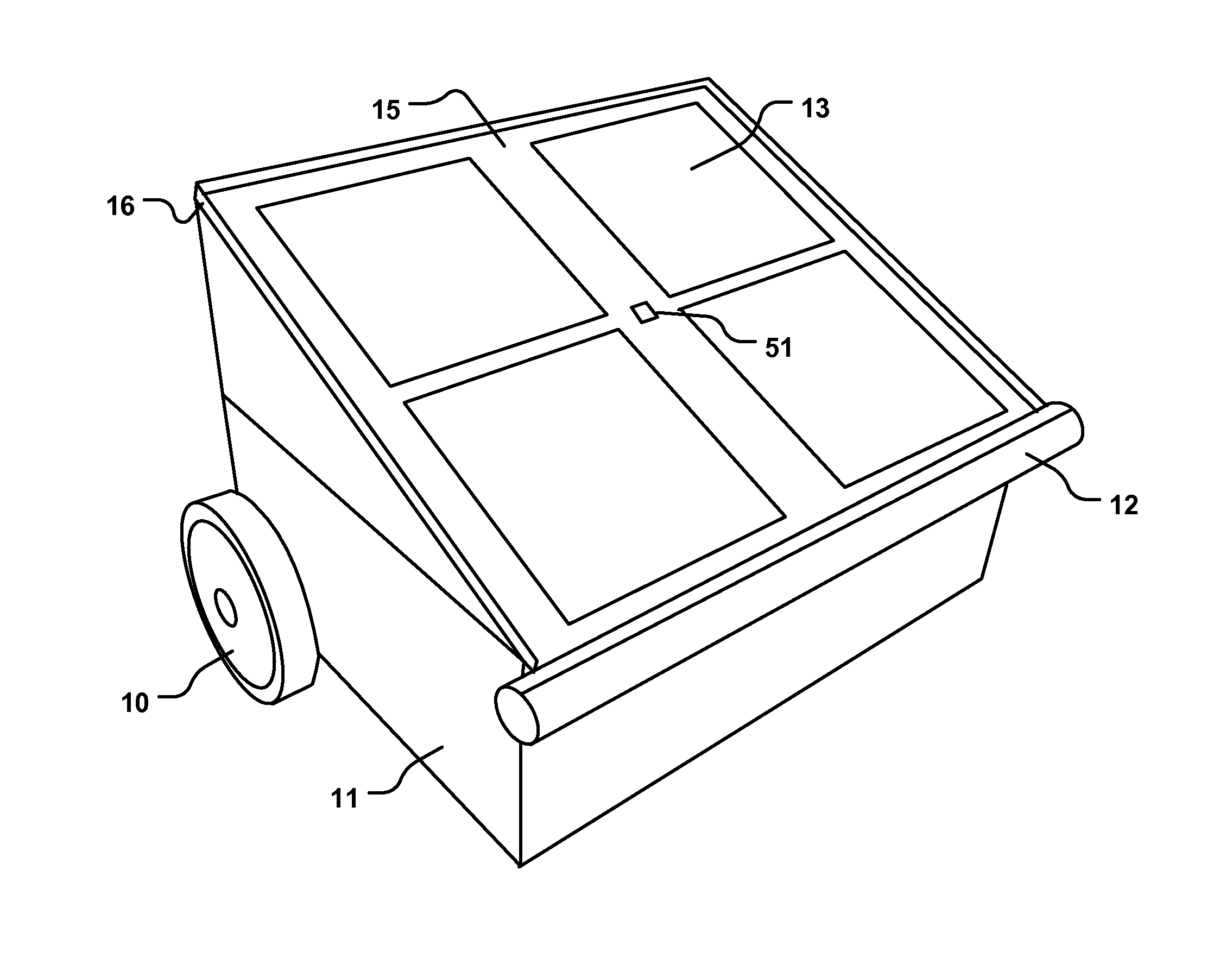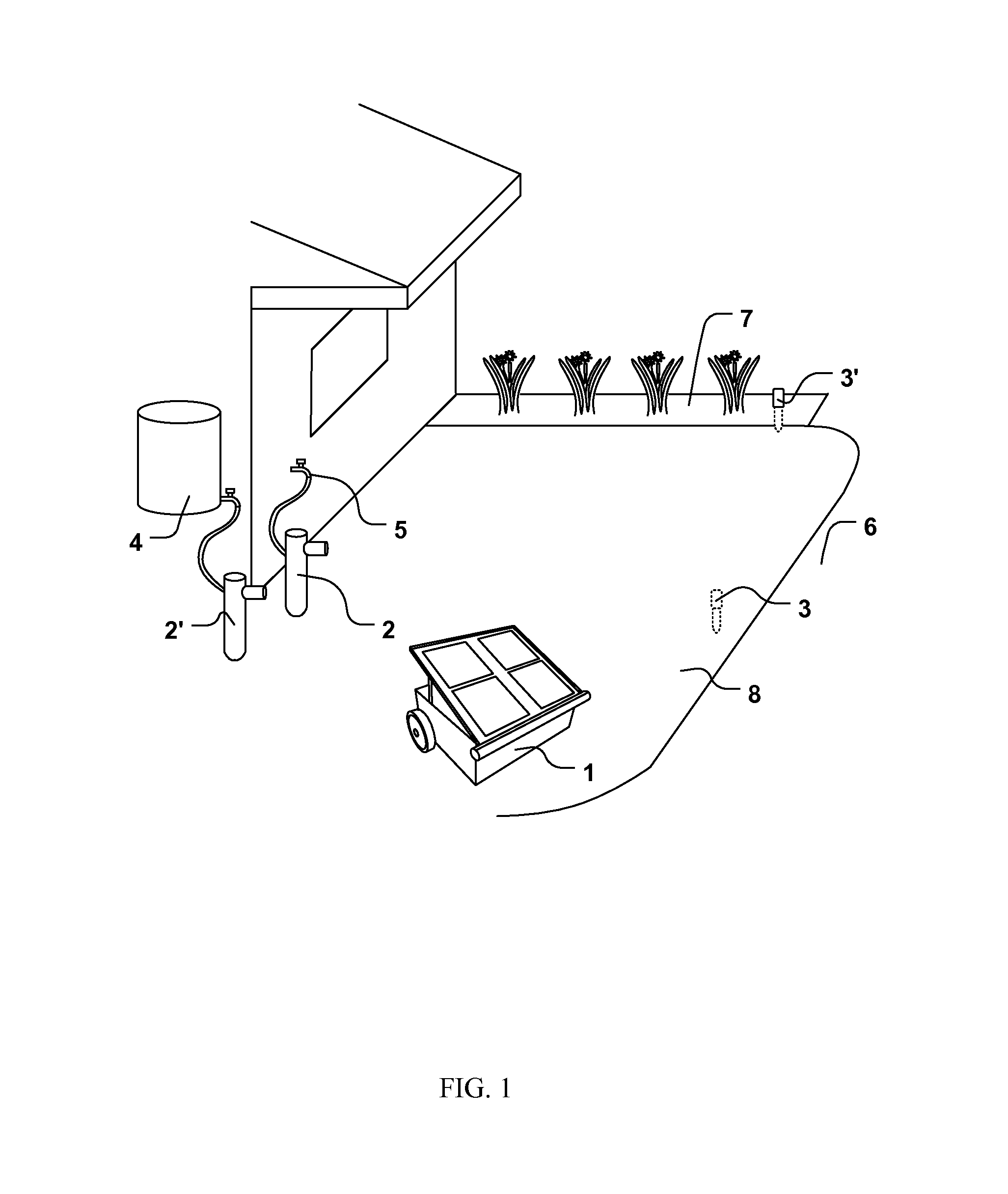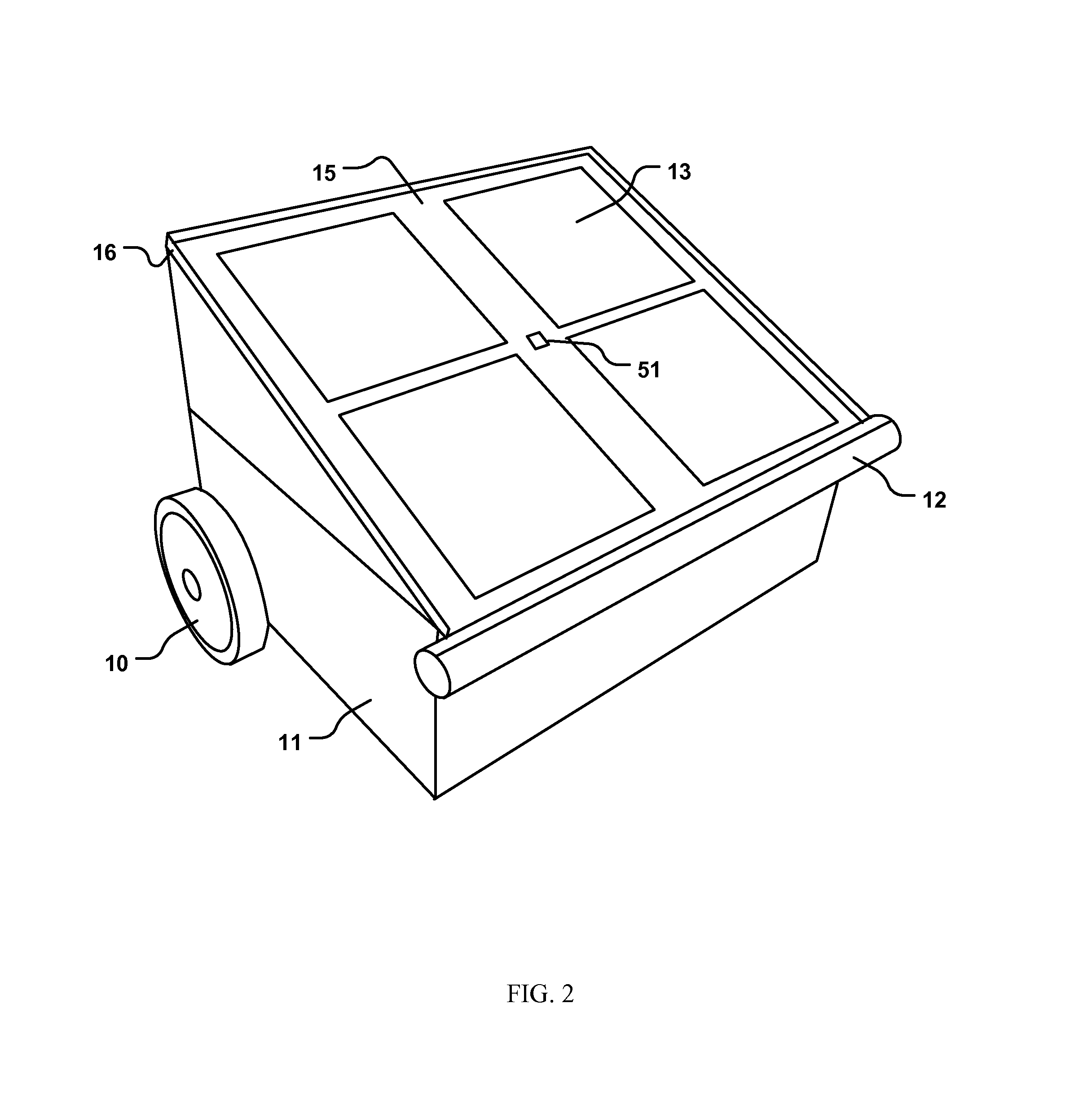Untethered Irrigation Device and Method
a technology of irrigation device and irrigation method, which is applied in the direction of process and machine control, instruments, renewable energy machines, etc., can solve the problems of wasting a large amount of water used for irrigation, complicated irrigation, and limited control granularity
- Summary
- Abstract
- Description
- Claims
- Application Information
AI Technical Summary
Benefits of technology
Problems solved by technology
Method used
Image
Examples
Embodiment Construction
[0031]Embodiments are directed to devices, systems, and methods for irrigating soil for lawns, gardens, crops, and around trees. Certain embodiments are directed to a mobile robotic irrigation device. In certain aspects the device is capable of one or more tasks that include, but are not limited to irrigation and soil moisture monitoring.
[0032]The irrigation system reduces water use by irrigating each point with an area with water volume determined by soil moisture, user specification, and environmental information. The technologies implemented in aspects of the invention are chosen to minimize environmental impact and provide financial benefit and convenience over other systems of irrigation.
[0033]With reference to FIG. 3, in certain embodiments the system comprises a mobile robot 1 (an irrigator) with an autonomous navigation system, control module 33 and an integral water tank 24. With reference to FIG. 1, the robot 1 autonomously fills the water tank from a refill station 2, tra...
PUM
 Login to View More
Login to View More Abstract
Description
Claims
Application Information
 Login to View More
Login to View More - R&D
- Intellectual Property
- Life Sciences
- Materials
- Tech Scout
- Unparalleled Data Quality
- Higher Quality Content
- 60% Fewer Hallucinations
Browse by: Latest US Patents, China's latest patents, Technical Efficacy Thesaurus, Application Domain, Technology Topic, Popular Technical Reports.
© 2025 PatSnap. All rights reserved.Legal|Privacy policy|Modern Slavery Act Transparency Statement|Sitemap|About US| Contact US: help@patsnap.com



